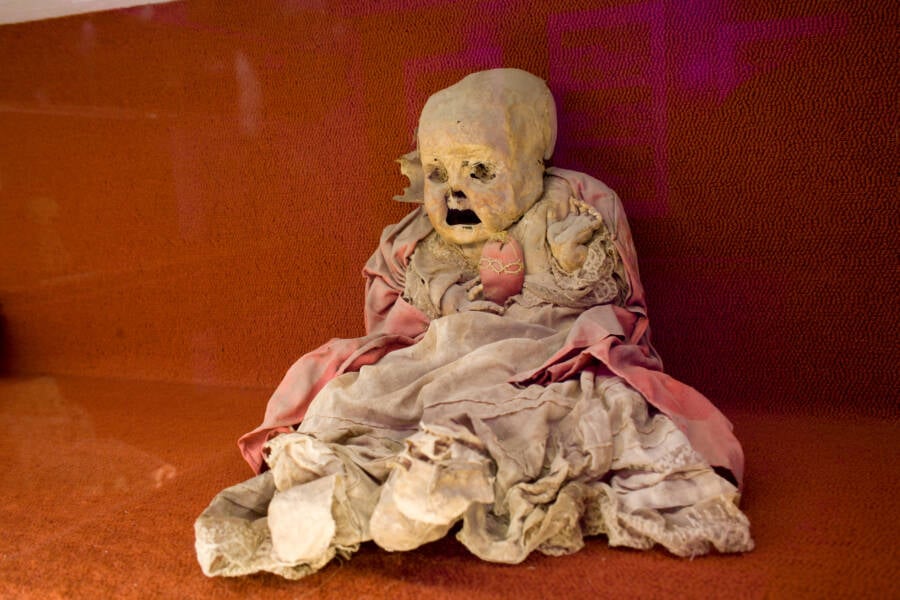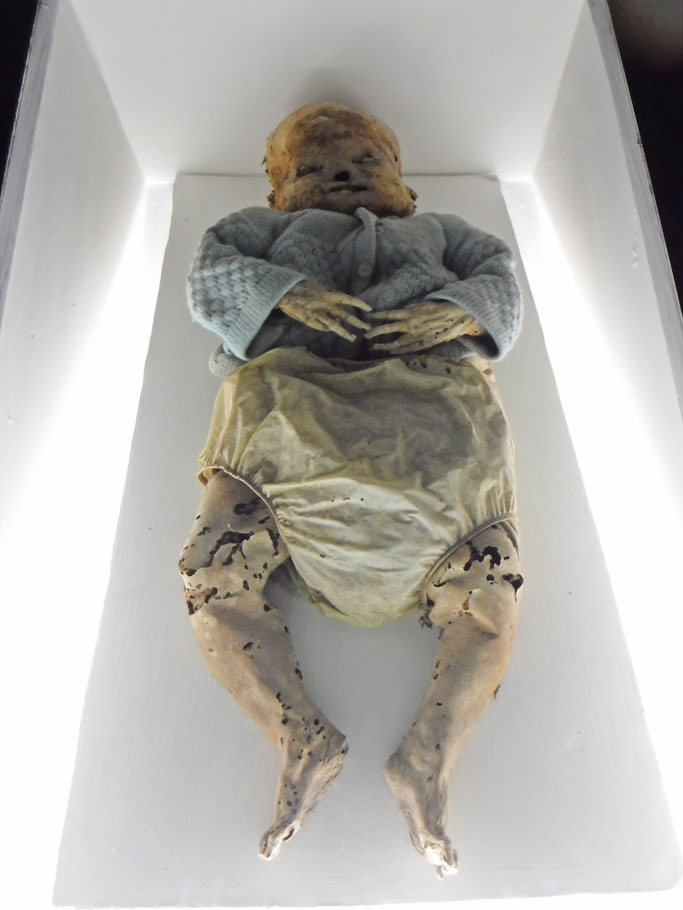In the heart of Guanajuato, Mexico, lies a mausoleum known for its extraordinary display of mummified corpses. Among these, two mummified children capture the attention of visitors. One child is dressed in a wool sweater, a poignant reminder of the past, while the other wears a delicate silk dress, adding a touch of elegance to their eternal rest. These young mummies are part of a fascinating exhibit at the Guanajuato panteón, where the city’s unique soil composition naturally mummifies the interred bodies.
The Process of Natural Mummification
Guanajuato’s soil, rich in minerals, promotes natural mummification, preserving bodies in a remarkably intact state. This phenomenon occurs due to the specific chemical composition of the earth, which prevents the usual decomposition process. The result is a collection of mummies that provide a rare, tangible connection to the past.

Economic Realities and the Panteón Museum
The city of Guanajuato charges a fee for interment in the panteón. When families are unable to pay this fee, their deceased relatives are exhumed and placed on display in the museum situated within the mausoleum’s grounds. This practice, though seemingly macabre, serves a dual purpose: it generates revenue from tourists and preserves the memory of those who once lived. Visitors from around the world come to witness this unique collection, contributing to the local economy and ensuring the upkeep of the panteón.
A Rich Tradition of Remembrance
Funeral rites in Mexico are often elaborate and deeply rooted in tradition. Gravestones are adorned with vibrant decorations, and families create festive remembrances of their dearly departed. This cultural practice is most evident during the annual Day of the Dead celebrations on November 1st. This day-long event is a celebration of life and death, filled with parades, parties, and cemetery visits, where families honor their ancestors with offerings and joyous festivities.
The Mummified Children: Symbols of a Time Gone By
The mummified children of Guanajuato are more than just preserved bodies; they are symbols of a time gone by, encapsulating the cultural and historical essence of the region. Their preserved state offers a glimpse into the lives they once led and the traditions they were part of. The wool sweater and silk dress they wear speak to the care with which they were buried, reflecting the love and respect of their families.

The Intersection of Tourism and Tradition
The practice of displaying mummified corpses may seem unusual to some, but it highlights the intersection of tourism and tradition in Guanajuato. The revenue generated from these exhibits supports the maintenance of the panteón and helps preserve the cultural heritage of the area. For visitors, it offers a unique opportunity to engage with history in a direct and personal way.
Conclusion: Preserving the Past for Future Generations
The mummified children of Guanajuato are a testament to the city’s rich history and unique cultural practices. Through natural mummification and thoughtful preservation, these exhibits provide invaluable insights into the past. As visitors explore the panteón museum, they not only witness a fascinating aspect of Mexican culture but also contribute to the ongoing preservation of this heritage. The mummies of Guanajuato stand as silent storytellers, bridging the gap between past and present, and ensuring that the memories of those who came before us are never forgotten.
Video
